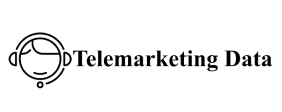In the world of digital marketing, many terms can seem confusing or even interchangeable. Two of these terms that are often misunderstood are Content Marketing and Inbound Marketing . While both are CRUCIAL to an effective digital marketing strategy, they are often confused. Here you will see the differences and connections between these two powerful marketing methods.
What is Inbound Marketing?
Inbound marketing , or attraction marketing, is a broad strategy that involves attracting customers through relevant content and interactions that are helpful and non-intrusive. Unlike traditional marketing, which often interrupts the consumer experience, inbound marketing seeks to create connections and solve problems that potential customers already have.
Important Points of Inbound Marketing:
- Attraction : Generate traffic to your channels.
- Conversion : Turning visitors into leads.
- Closing : Convert leads into customers.
- Delight : Engaging customers to promote the brand.
Each step of the inbound mobile phone number data updated 2025 process utilizes various marketing tools, from SEO and social media to email marketing and content management , to nurture leads and strengthen the current state and future of cross-border customer relationships.
And now, what is Content Marketing?
Content Marketing is A BRANCH of inbound marketing focused on creating and distributing valuable, relevant, and consistent content to attract and retain a clearly defined audience – so that this audience, already aware of something due to the valuable content, makes a decision to buy.
- Educate your target audience, establishing your brand or yourself as a reference on the subject.
- Engage potential customers, building lasting relationships.
- Convert by encouraging specific actions that lead to sales or appointments.
Content marketing does not directly promote your brand, but is designed to stimulate interest in your products or services through useful and relevant information.
Connections between Content Marketing and Inbound Marketing
Despite their differences, content marketing and inbound marketing go hand in hand and should go hand in hand. Content marketing is, in fact, an essential component of inbound marketing. It fuels each stage of the inbound funnel , providing the content needed to attract visitors, convert leads, close sales, and delight customers. In essence, without content, inbound marketing cannot function.
Key Differences
The main difference between the two lies in their primary objective. Inbound Marketing is a broader strategy that encompasses several digital marketing activities aimed at engaging customers through different stages of the buyer’s journey. On the other hand, Content Marketing is specifically focused on producing that serves as the backbone for these activities.
They Complement Each Other
Although distinct, they are not mutually exclusive. On the contrary, they complement each other. Content marketing nurtures and empowers inbound marketing, while inbound marketing frames and maximizes the use of
Adopting both in your digital strategy will not only expand your reach, but also deepen your relationship with your audience, converting them not only into customers, but into advocates of your brand, as they understand the principle of your brand and identify with it. Furthermore, they increasingly consume content from your brand, as they find it interesting.
Content Marketing Examples:
- Company Educational Blog : A financial management software company creates a blog that regularly posts in-depth articles on accounting best practices, tax-saving tips, and tutorials on how to use their software. By providing value without asking for anything in return, this content helps establish the brand as an authority on the topic, increases organic traffic through SEO, and encourages readers to explore the brand and its products further.
- E-books and Whitepapers : A digital marketing consulting firm develops e-books and whitepapers that cover complex topics, such as “The Science Behind Conversion Rates” or “Marketing Trends in 2024.
- Integrated Attraction Campaign : A sports equipment store uses SEO to improve the visibility of its product pages in Google searches. At the same time, it promotes content on social media about the importance of choosing the right equipment for each type of sporting activity, driving traffic to its website.
- Webinars with Experts : A health and wellness company hosts monthly webinars with nutrition and fitness experts. To register for the webinar, attendees are asked to provide their email address and other basic information.

